by Andrew D. Warren & Charles E. Harp
Welcome to the Illustrated List of Colorado Lepidoptera! The goal of this project is to provide a comprehensive list of Lepidoptera species documented in Colorado, summarize our current state of knowledge about their distributions, and provide basic biological information for each species, when known, together with photos of adults.
TAXONOMIC INDEX:
SPHINGIDAE: SPHINGINAE:
The distribution maps are generated using MapChart (www.mapchart.net); resulting images are manually cropped and aligned. Data for distribution maps have been obtained from many sources, including from literature, museum collections, and internet sources including iNaturalist, Moth Photographers Group, Butterflies and Moths of North America (BAMONA), and SCAN-bugs; all county-level data was mapped onto a working paper map for each species before entry into MapChart. Despite this, given our state of knowledge of most taxa, all maps should be considered incomplete, except for some of the butterflies, which are comparatively very well known. If you have additional county-level distributional data for any species, please let me know; maps will be updated periodically.
Collections consulted include: Private collection of Andrew D. Warren, Castle Pines, Colorado (ADW); C. P. Gillette Museum of Arthropod Diversity, Department of Agricultural Biology, Colorado State University, Fort Collins (CSU); McGuire Center for Lepidoptera and Biodiversity, Florida Museum of Natural History, University of Florida, Gainesville (MGCL).
Specimen photographs include legends that provide collection data, although sometimes it is abbreviated from the full version on the specimen labels. Species names are linked to the Moth Photographers Group page for that species; links for the species at other sites are included at the bottom of each MPG page.
The text summarizes important aspects of the life history and/or distribution of each species, as well as adult flight times and right forewing length (FW). If only a single specimen is illustrated for a species, the FW corresponds to that of the illustrated specimen. If multiple specimens are shown, the FW is an average between them. When males and females differ substantially in wing length, FWF corresponds to the female wing length, while FWM refers to that of the male.

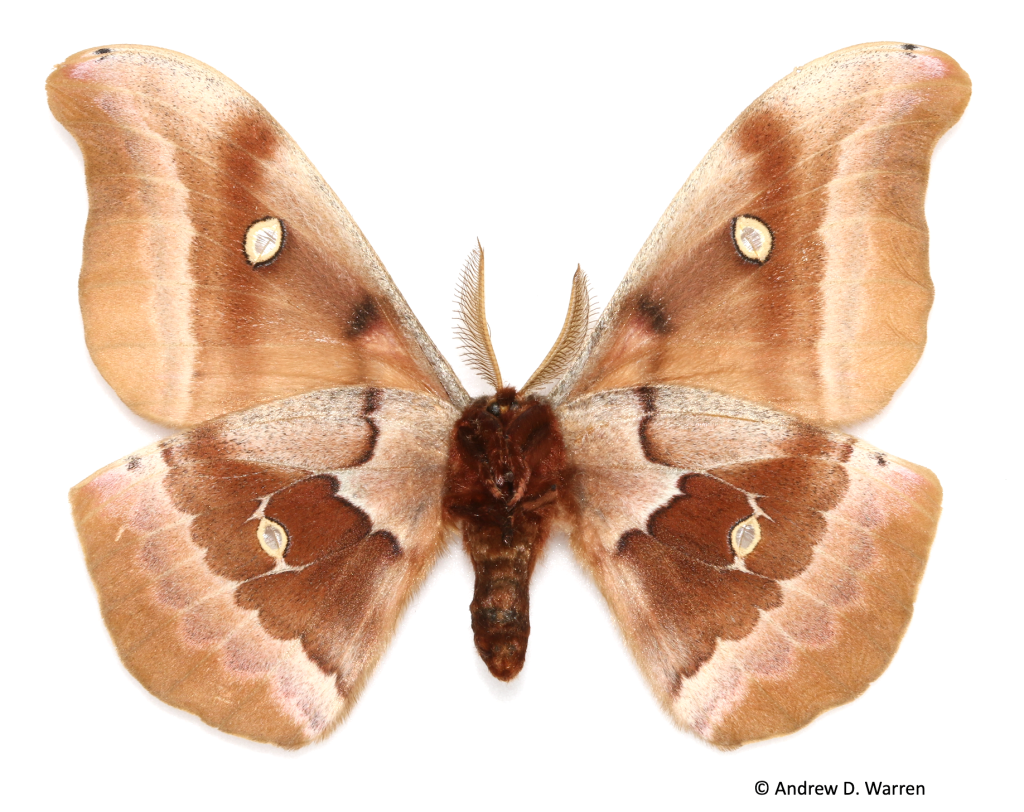

The Polyphemus Moth feeds on many deciduous trees and shrubs in urban areas; otherwise it is usually associated with gambel oak (Quercus gambelii), and will likely be found in all counties with oak. Single spring generation. FW = 52 mm
Hyalophora cecropia (Linnaeus, 1758)


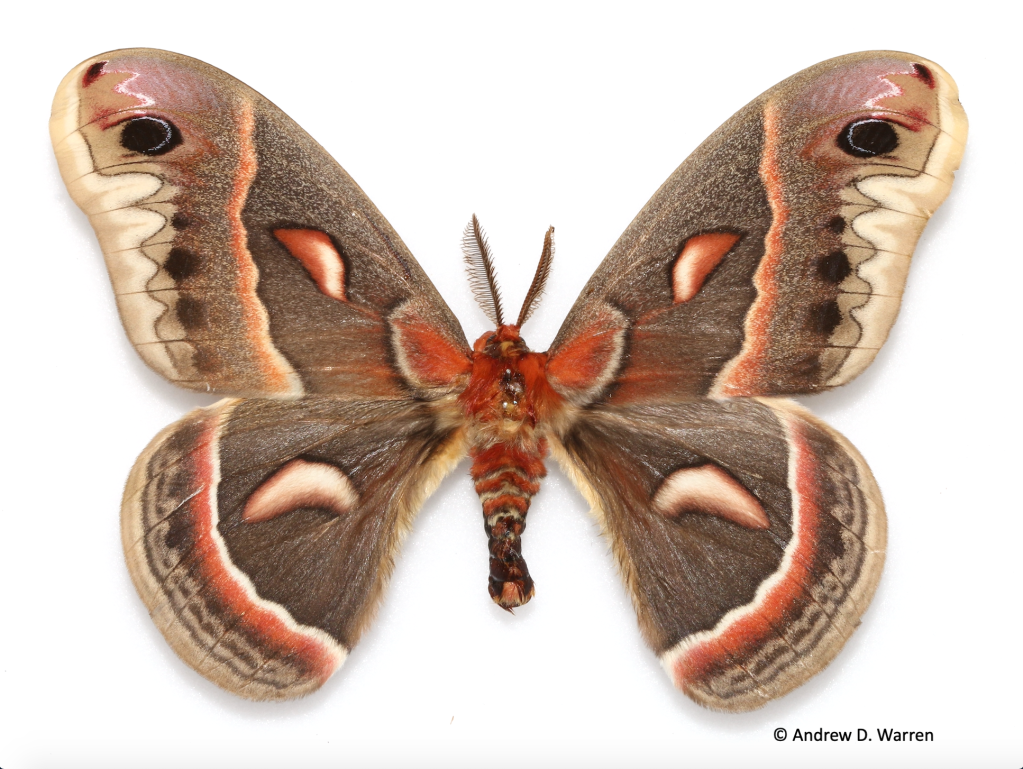


The Cecropia Moth is apparently no longer found along the Front Range, though was common there in the 1980’s and early 1990’s. It may still occur along the South Platte River in the northeastern part of the state. Larvae are highly polyphagous. Single spring generation. FW = 56 mm
Hyalophora gloveri Strecker, 1872
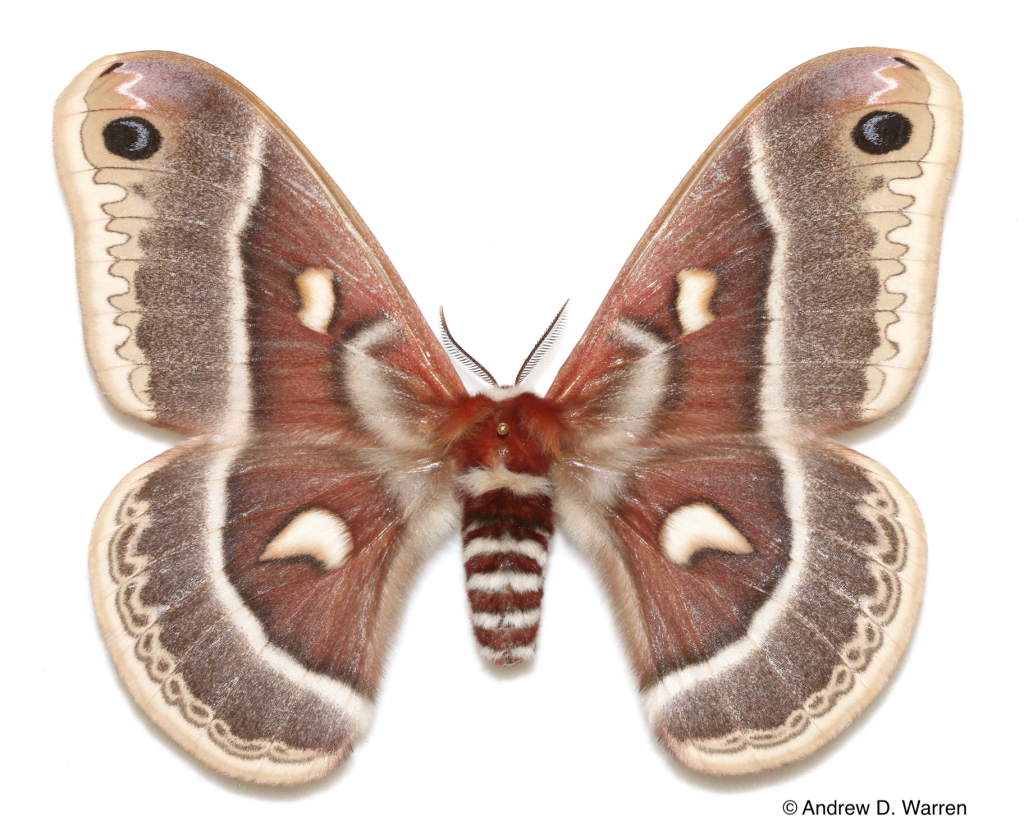
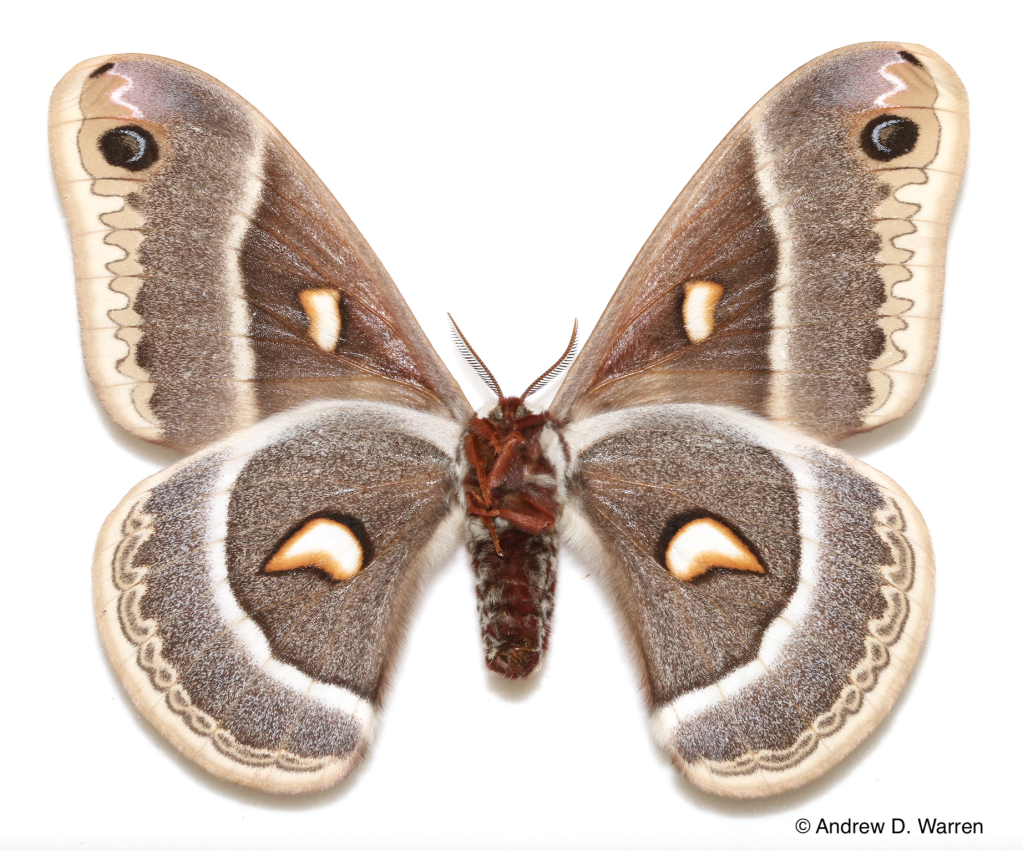

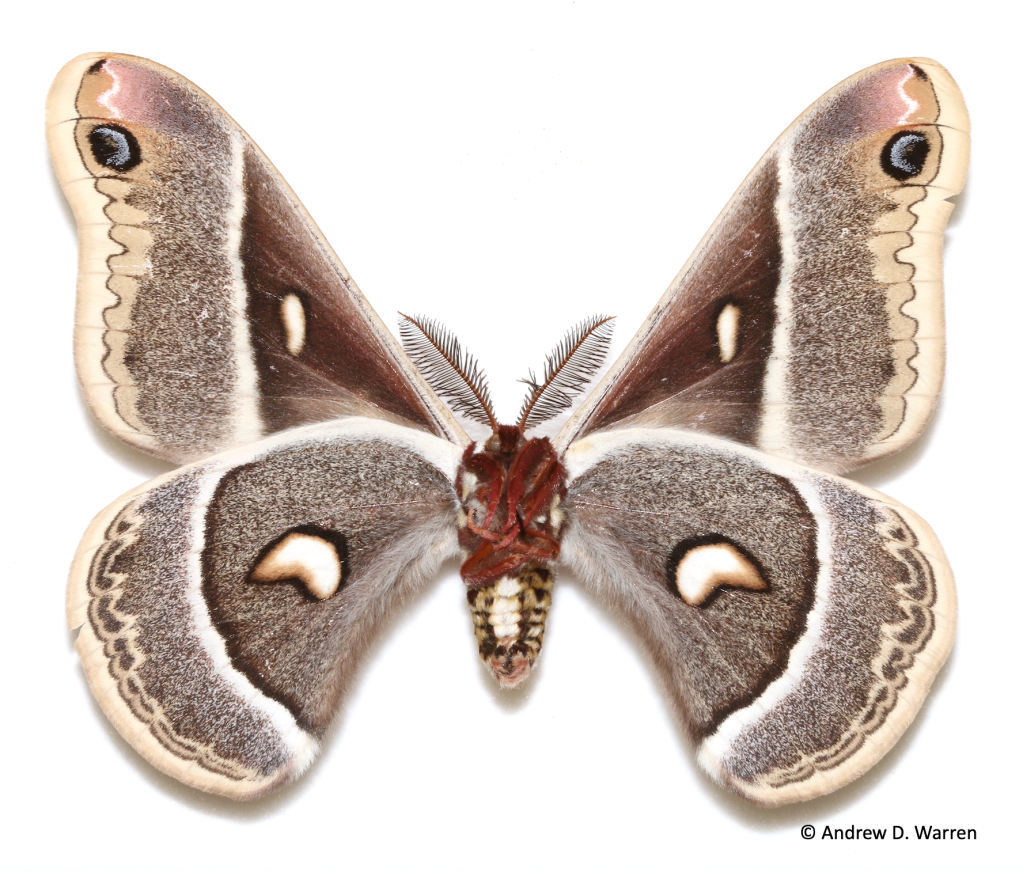
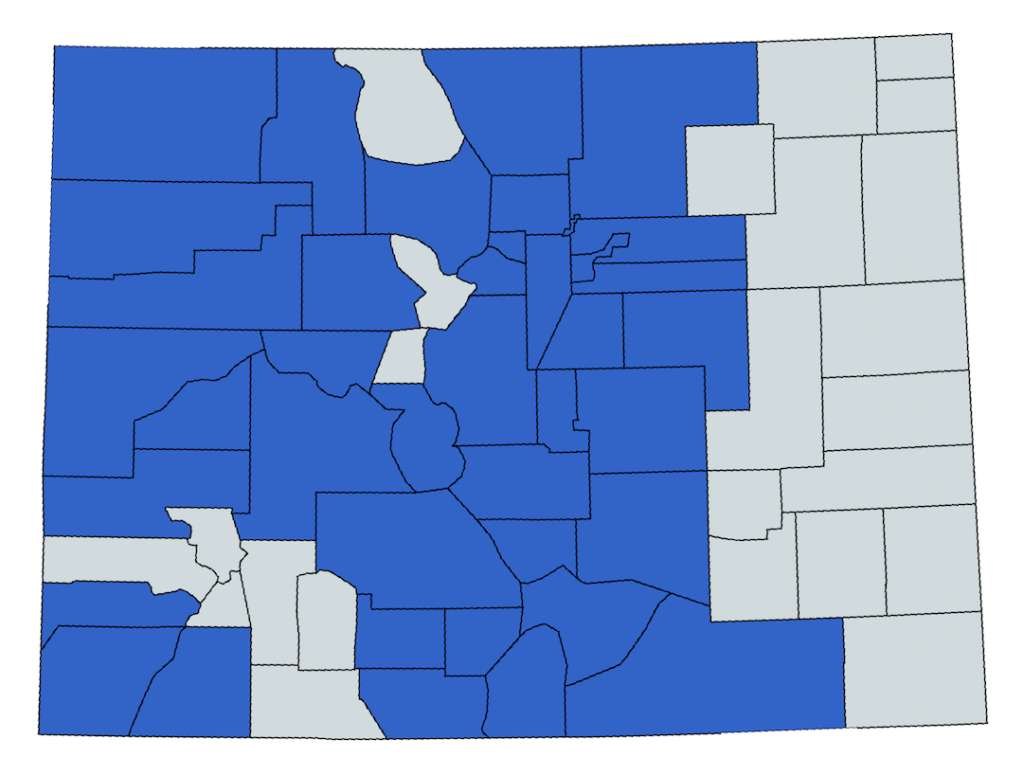
Glover’s Silkmoth will probably be found in all mountainous counties in the state. They feed on a large number of deciduous trees and shrubs, but are especially fond of chokecherry (Prunus virginiana) along the Front Range. Single spring generation. FW = 52 mm

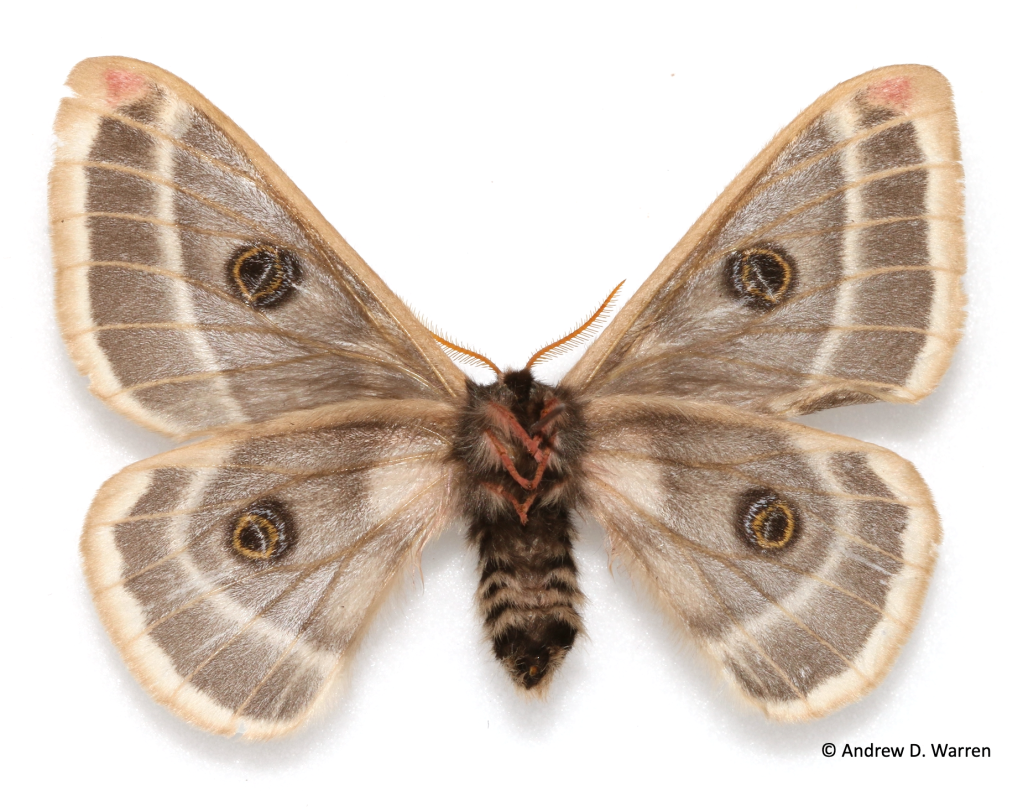



While infrequently encountered, this species is continuously distributed along the Front Range, usually around 8000-9000′ elevation. Larvae have been found on willow in Routt County by Don Bowman. Single summer generation. FW = 25 mm
SATURNIIDAE: HEMILEUCINAE:
Automeris io io (Fabricius, 1775)


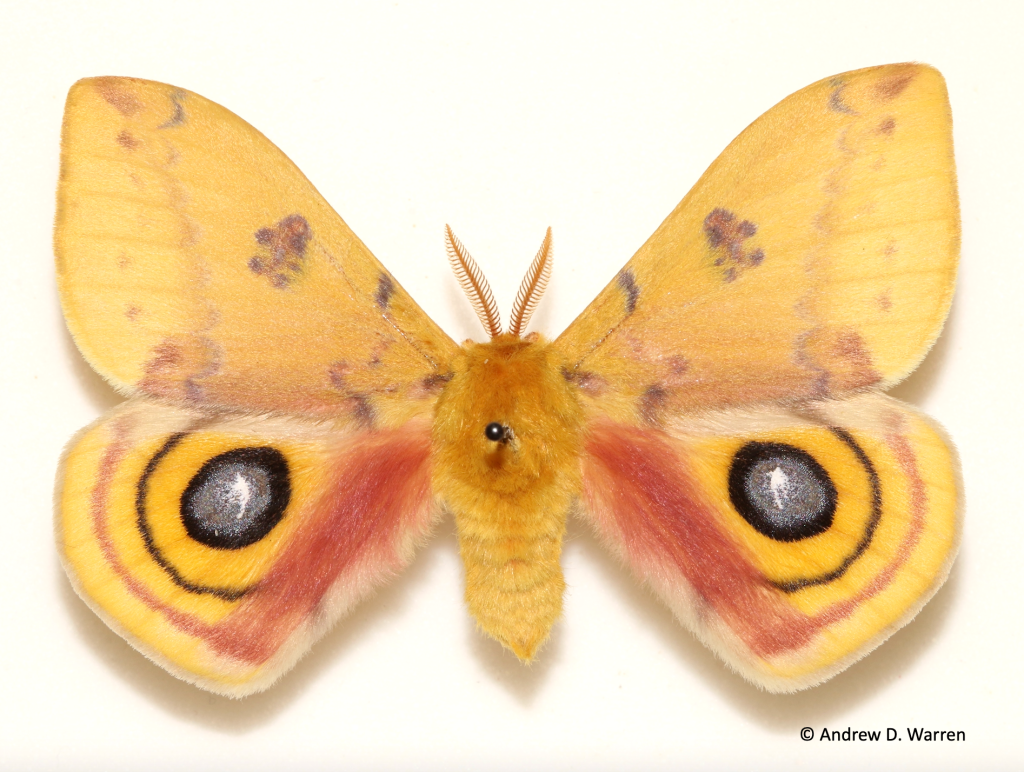
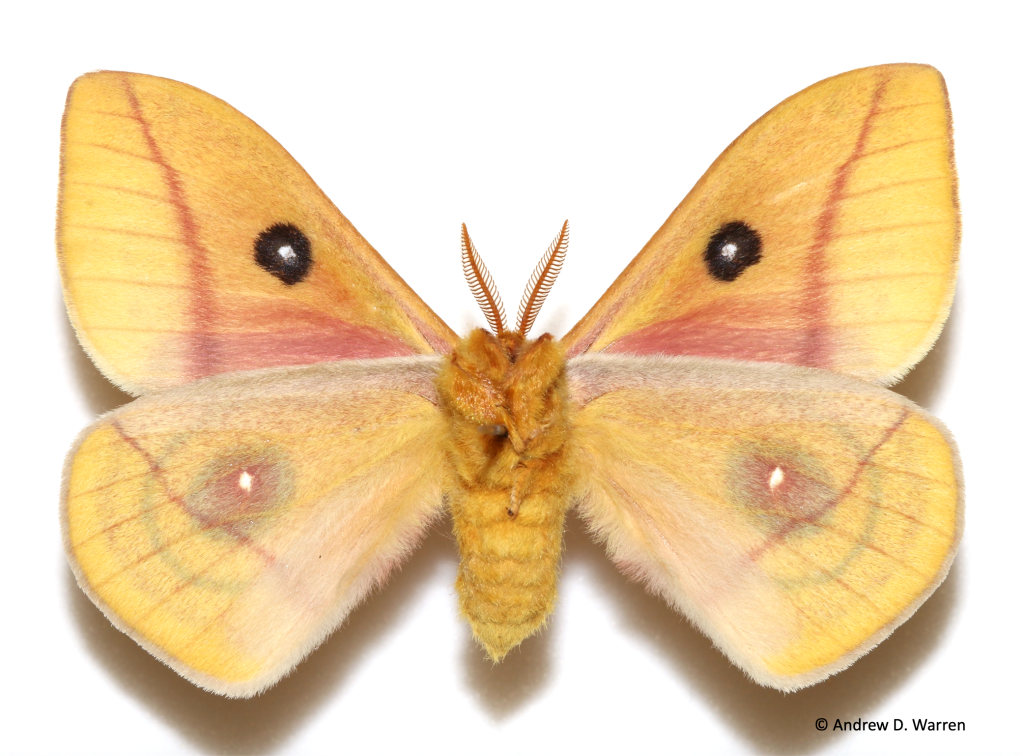
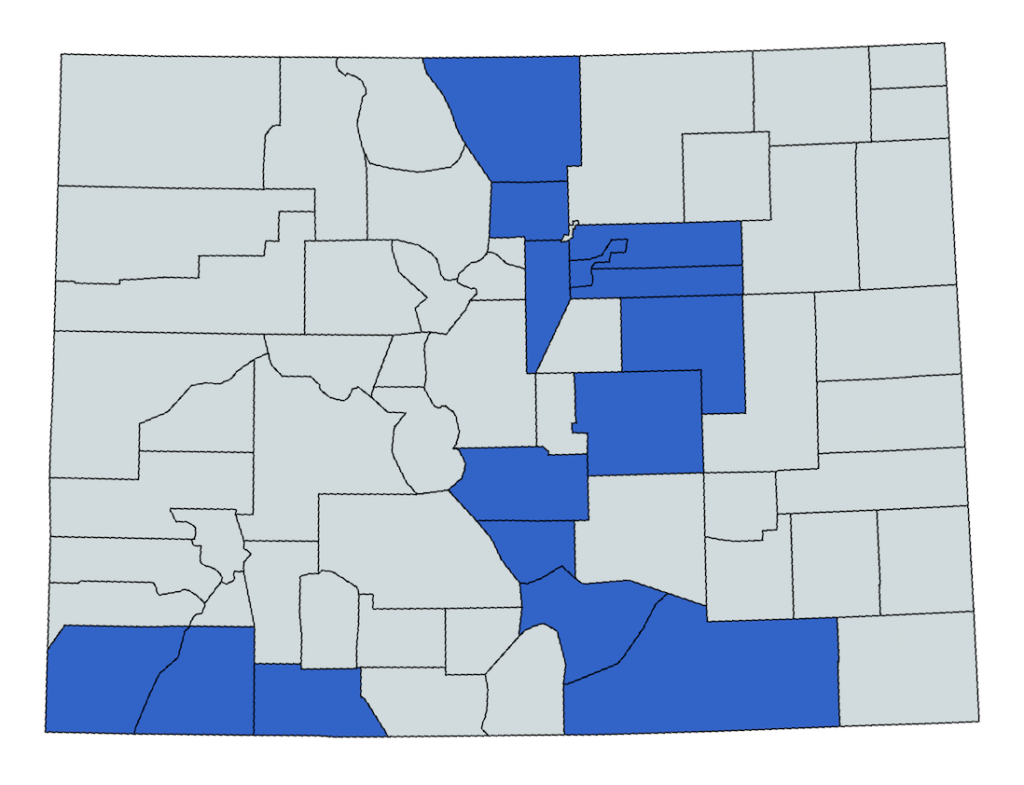
The Io Moth is uncommon in Colorado. Larvae feed on a wide variety of plants, including willow (Salix) and chokecherry (Prunus). Single spring generation. FWF = 26 mm; FWM = 22 mm
Hemileuca nevadensis Stretch, 1872
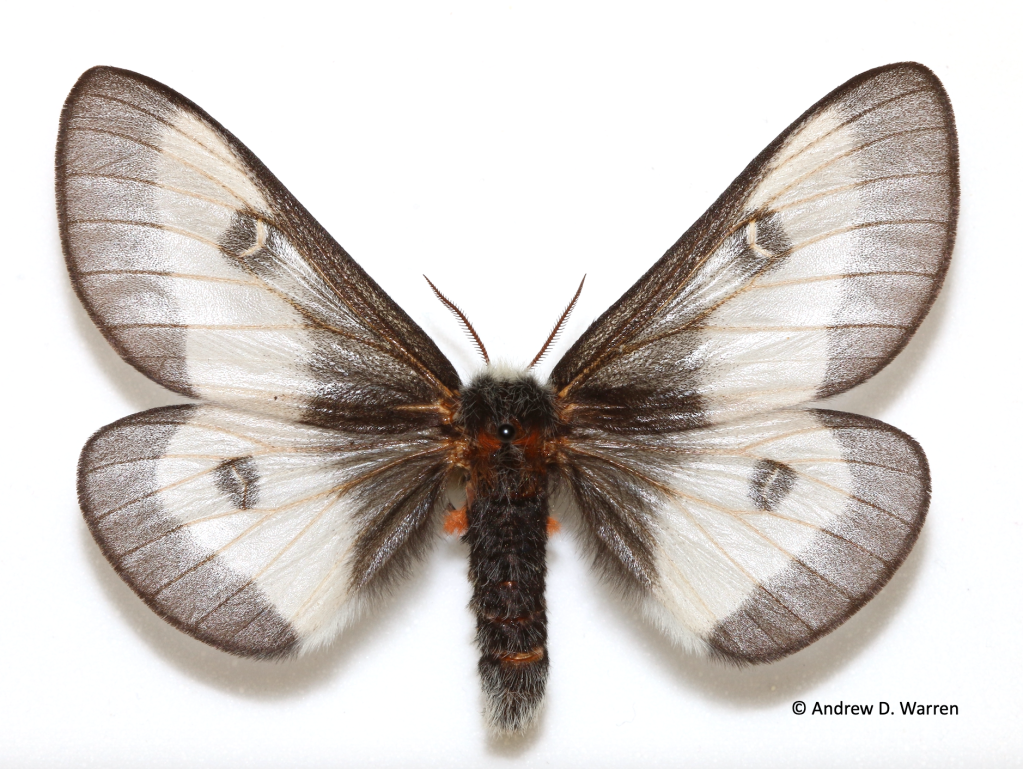
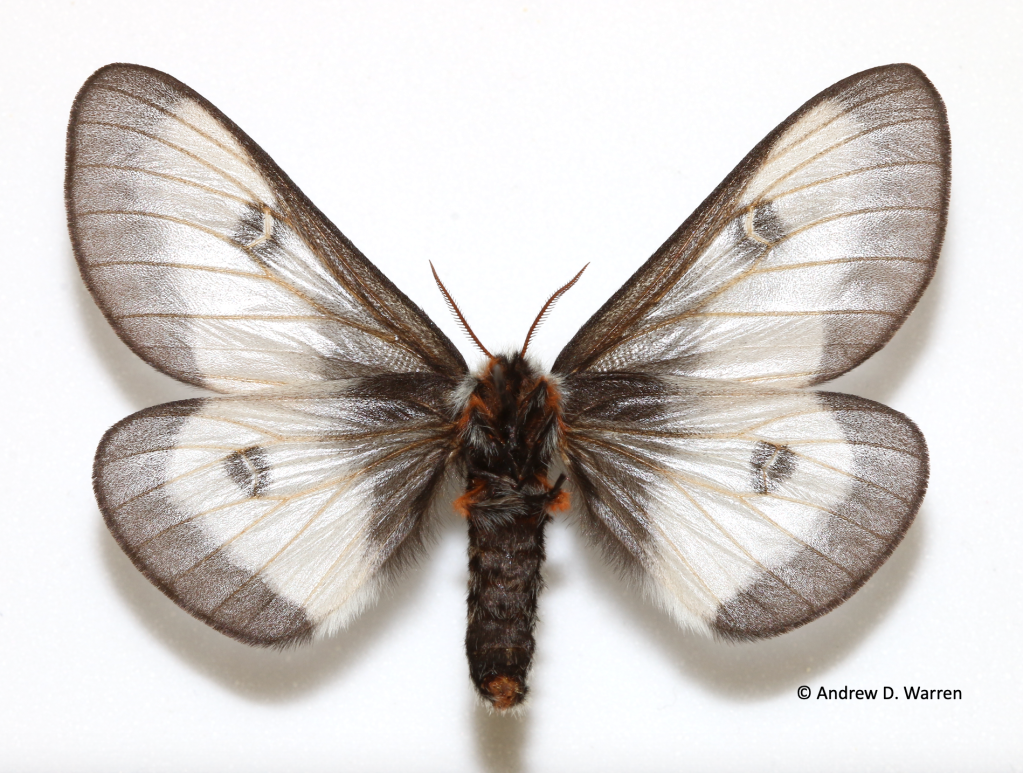



The Nevada Buck Moth flies in late September and early October, along riparian corridors in the Platte River drainage dominated by cottonwoods (Populus) and willows (Salix), the larval foodplants. The records from Delta County suggest it may be more widespread in western Colorado than currently known. FWF = 24 mm; FWM = 20 mm









Hemileuca diana is rarely seen due to its late flight time (late September-October) and very fast flight. Larvae disperse from Quercus gambelii when finished feeding in late June-July. Like other Hemileuca, pupae may diapause many years before eclosing. FWF = 17 mm; FWM = 13 mm
Hemileuca eglanterina annulata Ferguson, 1971 Complex
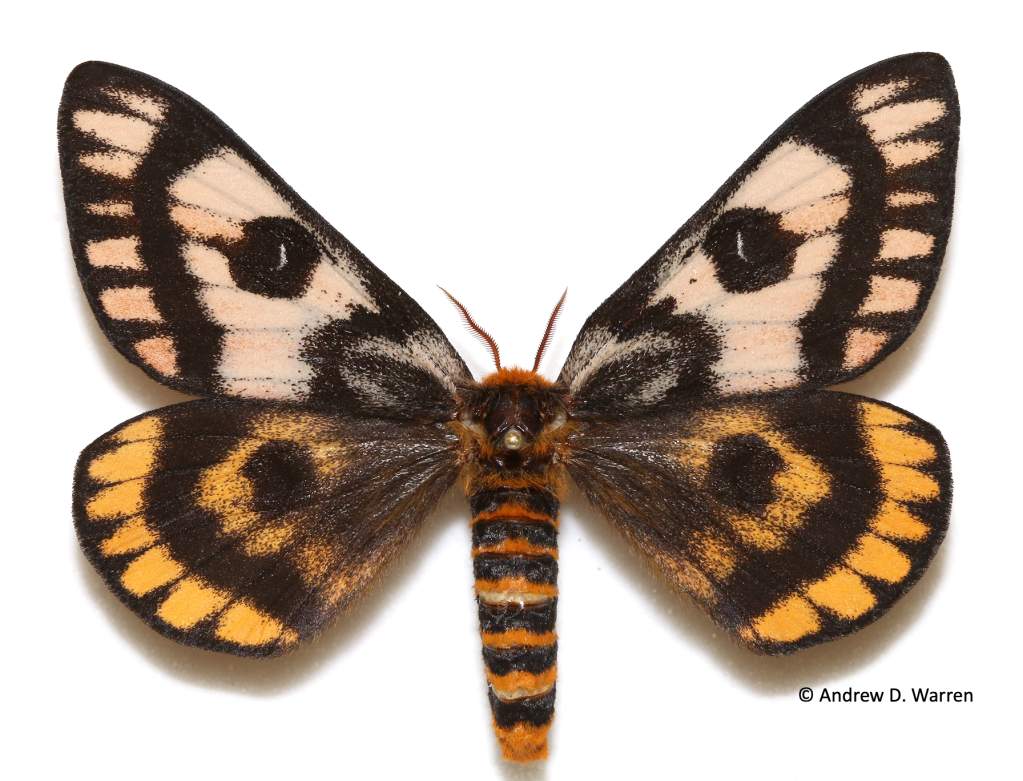
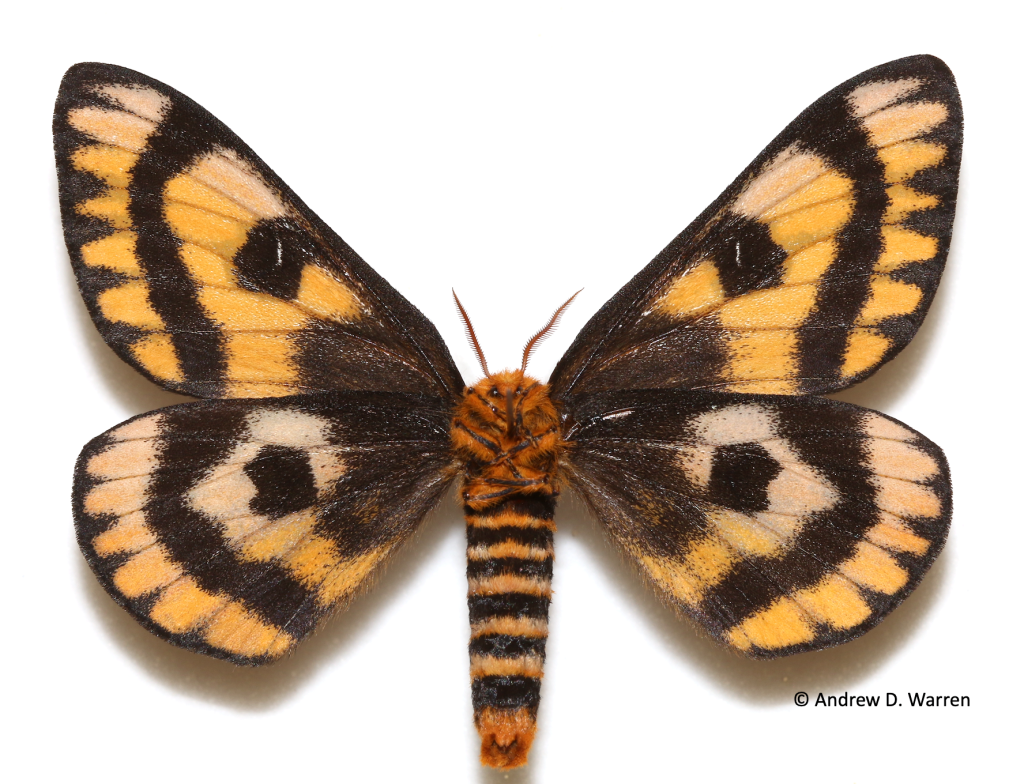


The pair above, from Grand County, represent typical annulata. Larvae feed on Purshia, Amelanchier and Symphoricarpos. FWF = 26 mm, FWM = 23 mm

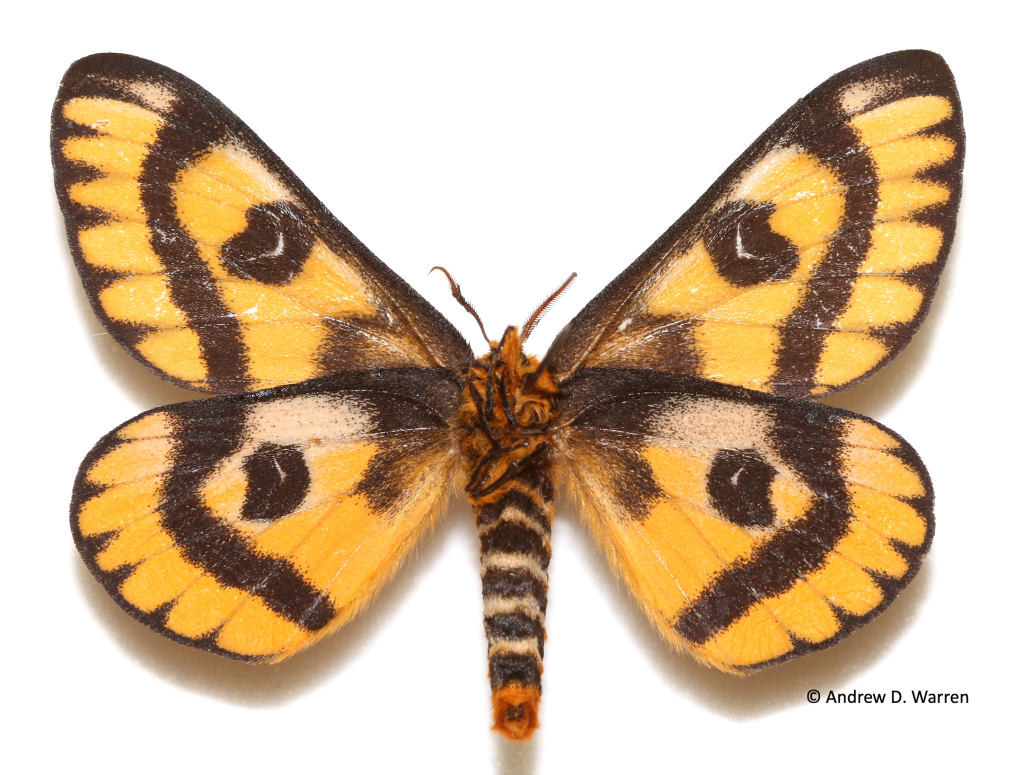


The pair above, from Jefferson Co., represent the oranger variety found east of the Continental Divide, in the San Luis Valley, and in the San Juans. Larvae feed on Cercocarpus montanus in the Front Range. FWF = 25 mm, FWM = 22 mm

The taxonomic status of Colorado members of the eglanterina Complex is unresolved. Populations in the Colorado River drainage represent typical annulata, which was recently treated as a species-level taxon by Lemaire. Populations east of the Continental Divide, and in the San Luis Valley and San Juans differ by adults being brighter orange, with orange tones on the forewing above. These are currently being studied by A. Warren and C. Harp. Adults of both varieties may begin their flight as early as late May, but late June-July into August is more typical.
Hemileuca nuttalli (Strecker, 1875)
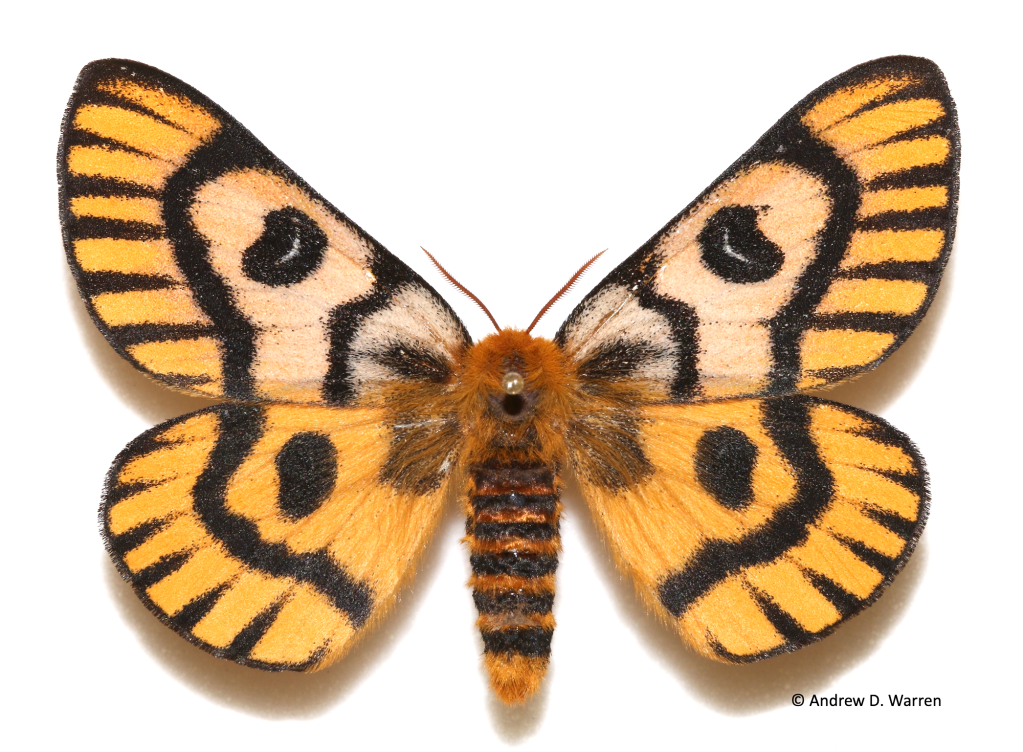
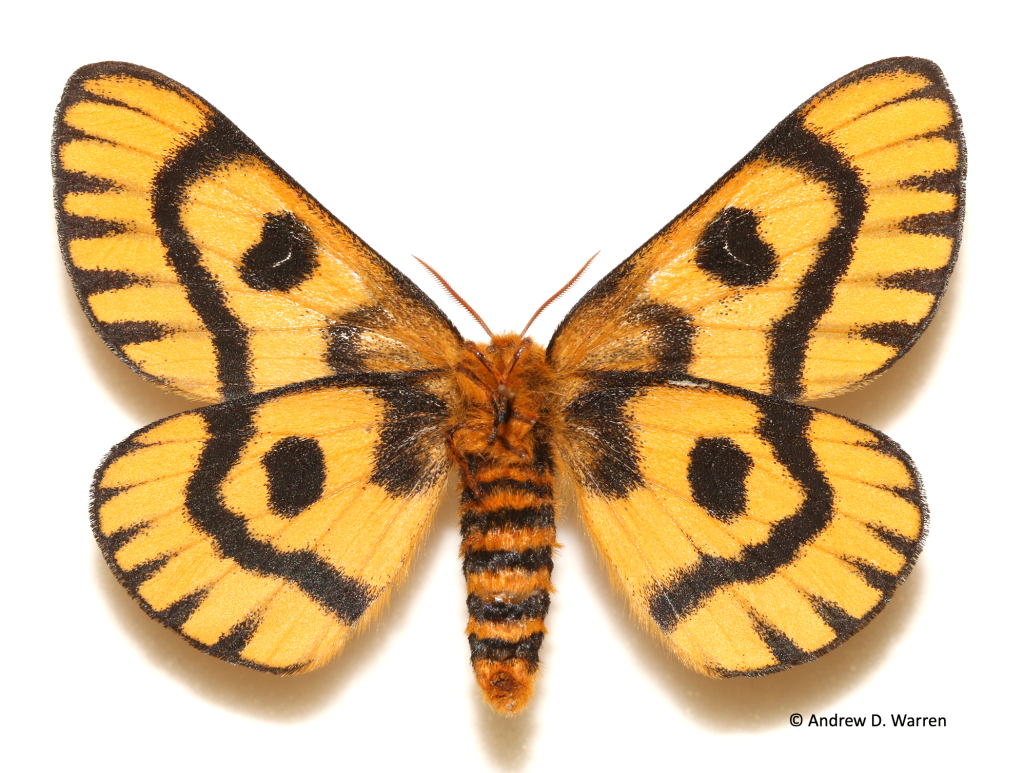
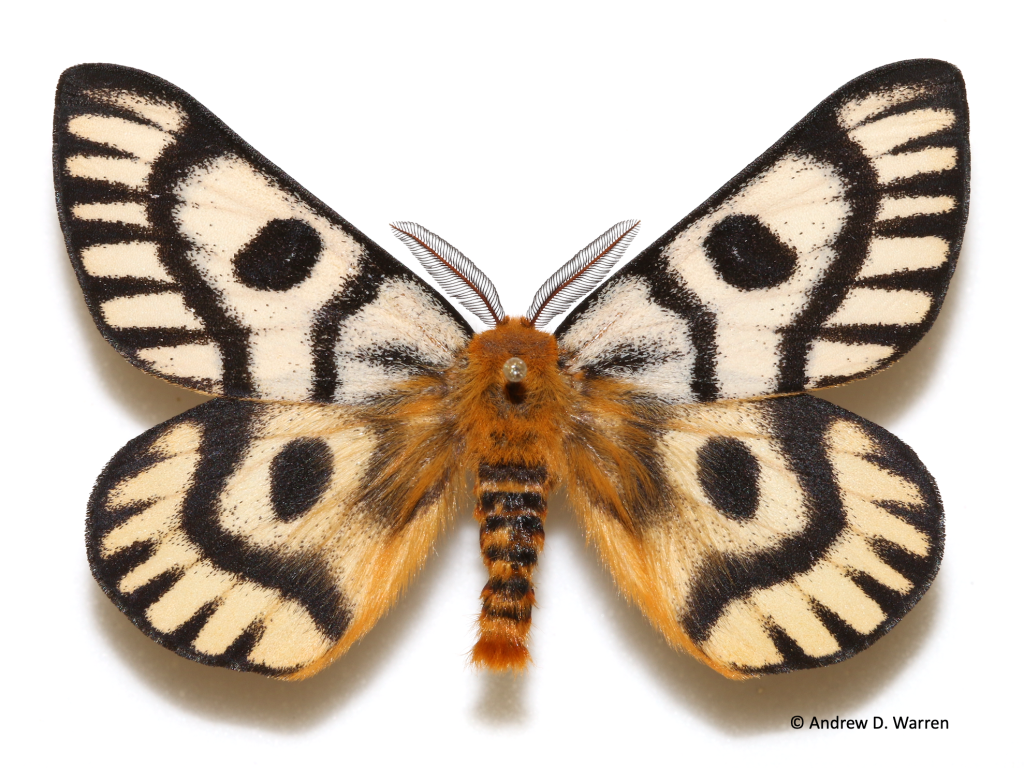






Hemileuca nuttalli occurs throughout the Colorado and Gunnison River drainages, as well as in the San Juans, in habitats dominated by antelope bitterbrush (Purshia tridentata), and snowberry (Symphoricarpos), the larval foodplants. Adults fly mid- to late summer. Colorado populations of nuttalli show a tremendous amount of individual variation; a few variants are shown above; for this reason uniformis is considered a synonym of nuttalli. FW = ~22 mm
Hemileuca hera hera (Harris, 1841)
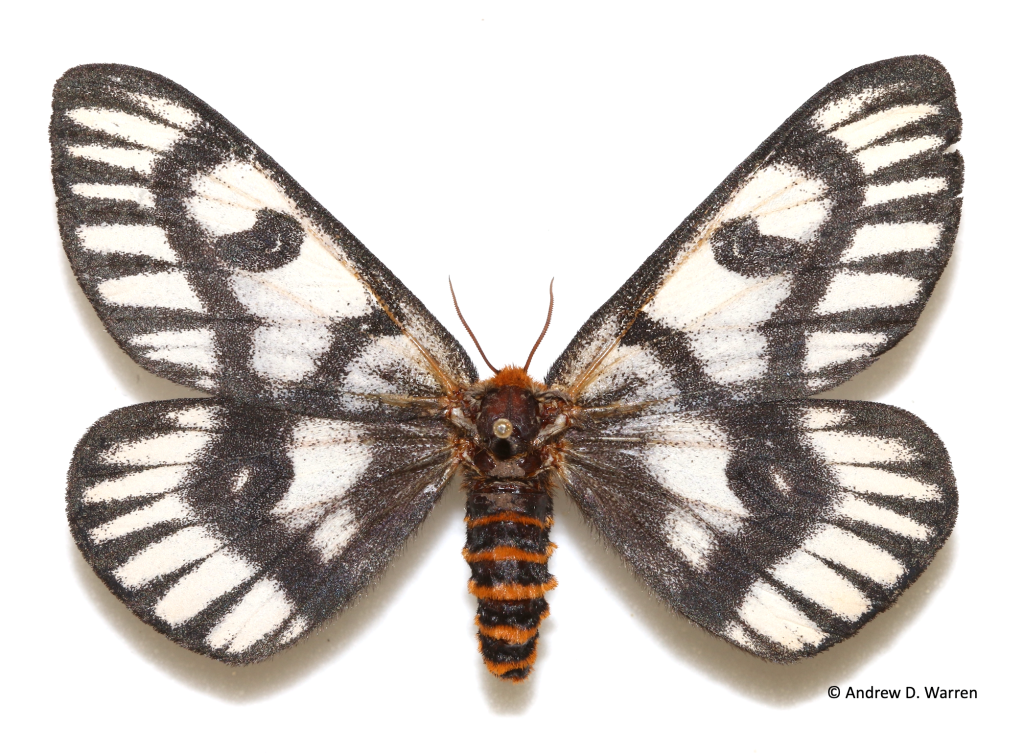




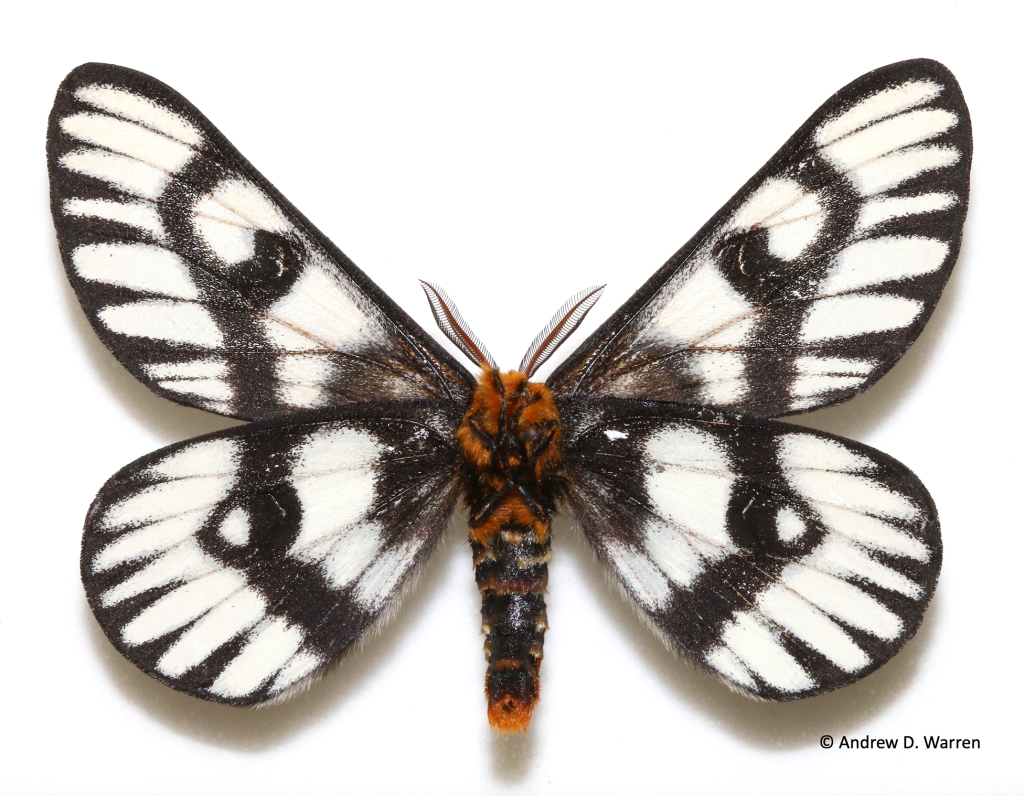
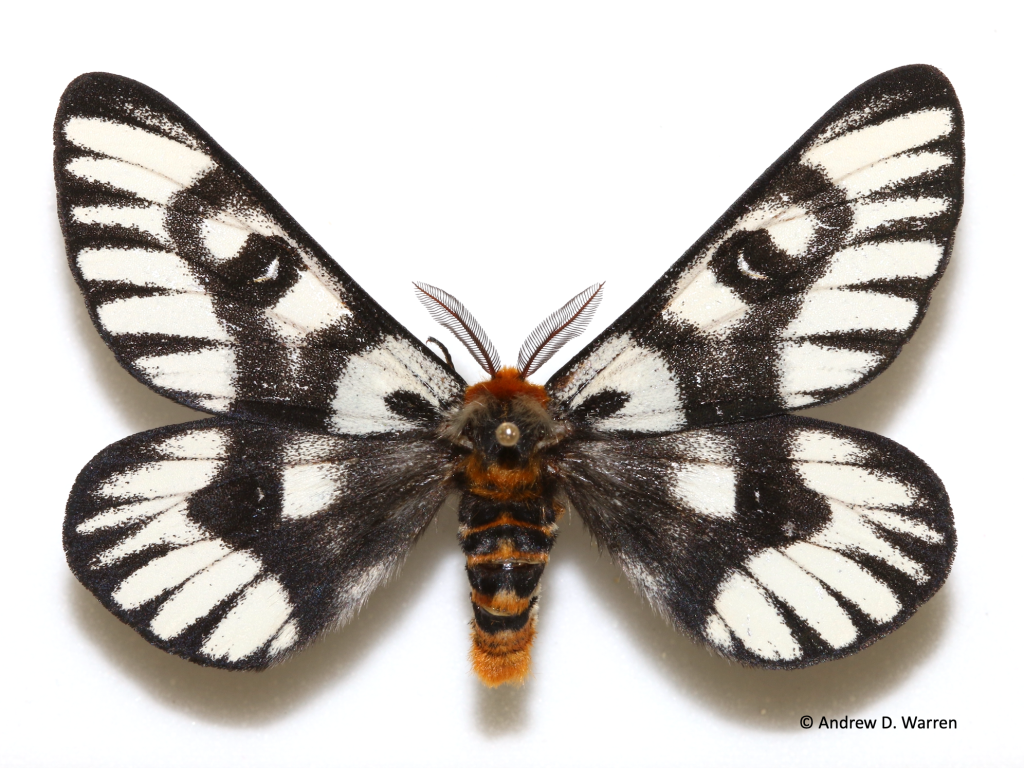
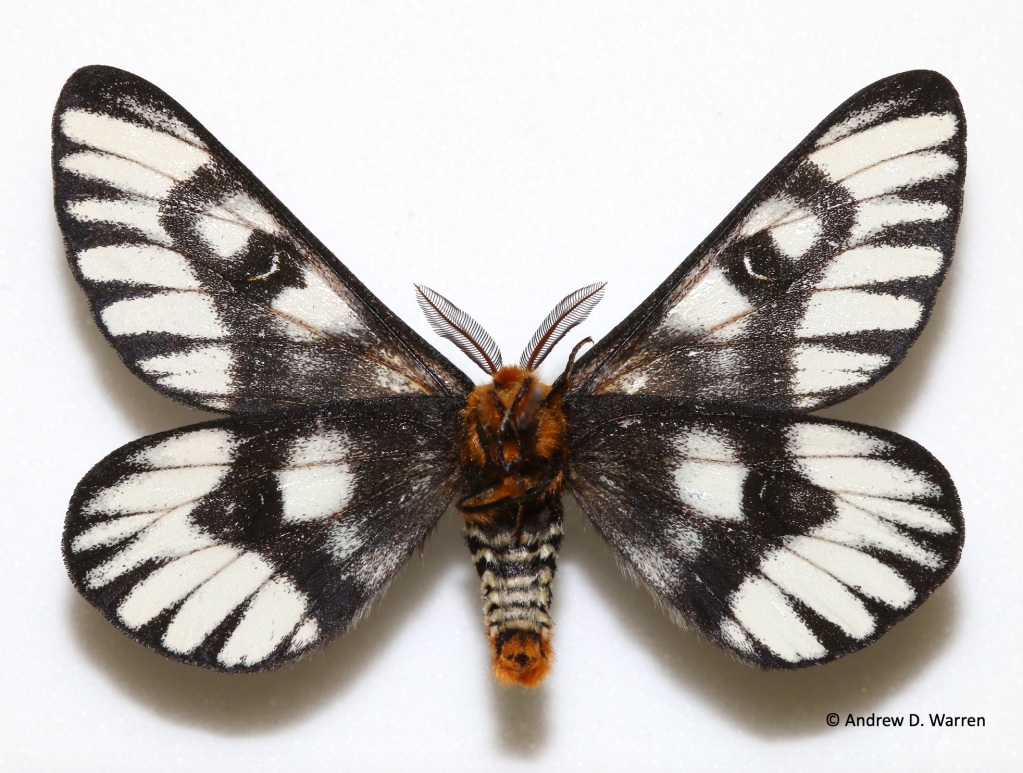

Hemileuca h. hera is widely distributed in western Colorado, in landscapes dominated by Sagebrush (Artemisia tridentata), the larval foodplant. Adults fly mid- to late summer. Some years this species is far more abundant than in others. FWF = 29 mm; FWM = 23 mm
Hemileuca hera magnifica (Rotger, 1948)







There has been no consensus on the taxonomic status of magnifica. It is frequently treated as a species-level taxon, but is biologically just like hera. A series collected by William Bernstein in Dolores County appears intermediate between hera and magnifica; details on these will be presented elsewhere. FWF = 32 mm; FWM = 31 mm
Hemileuca oliviae Cockerell, 1898
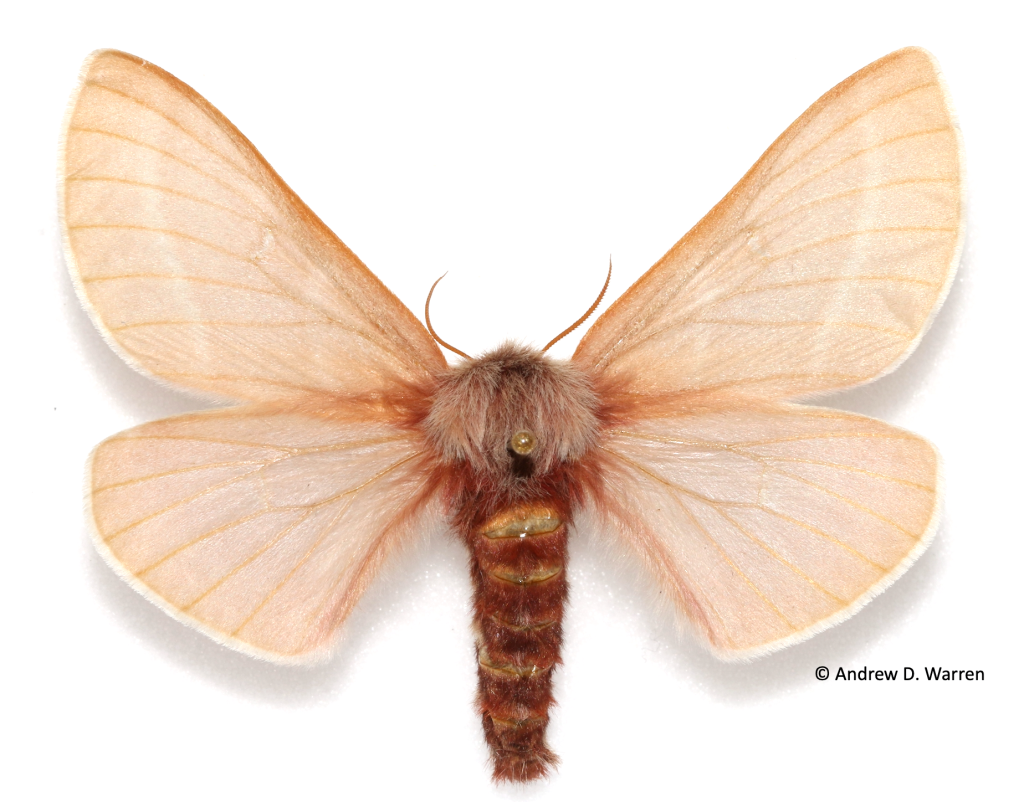
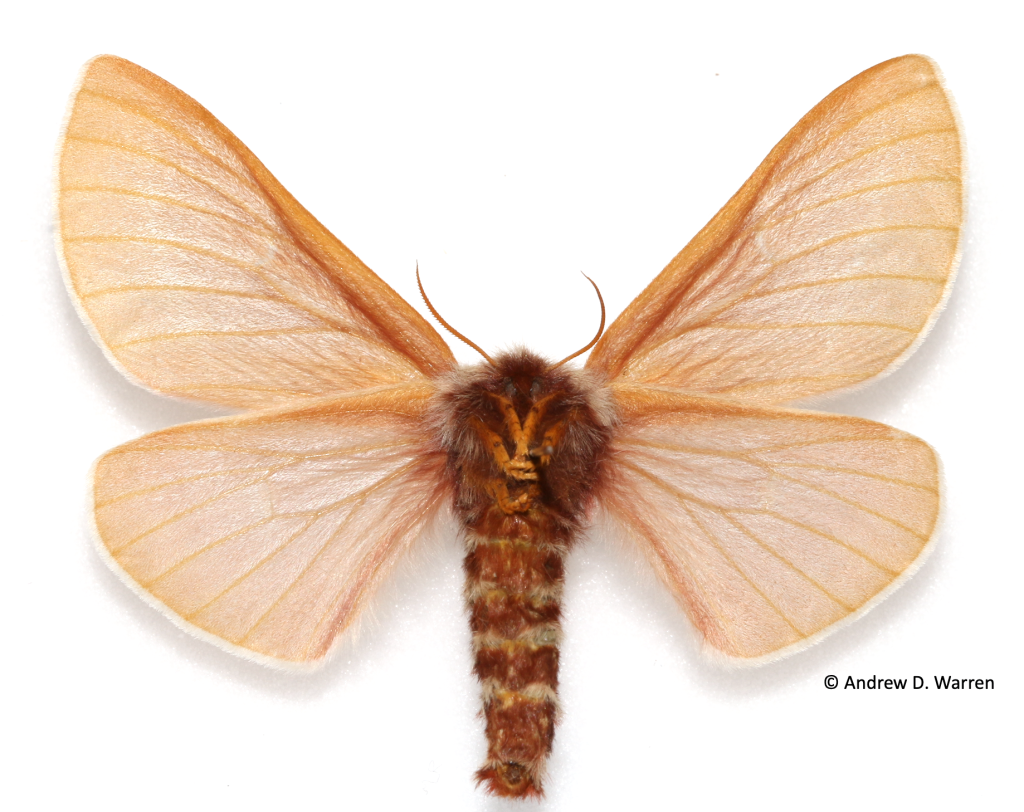
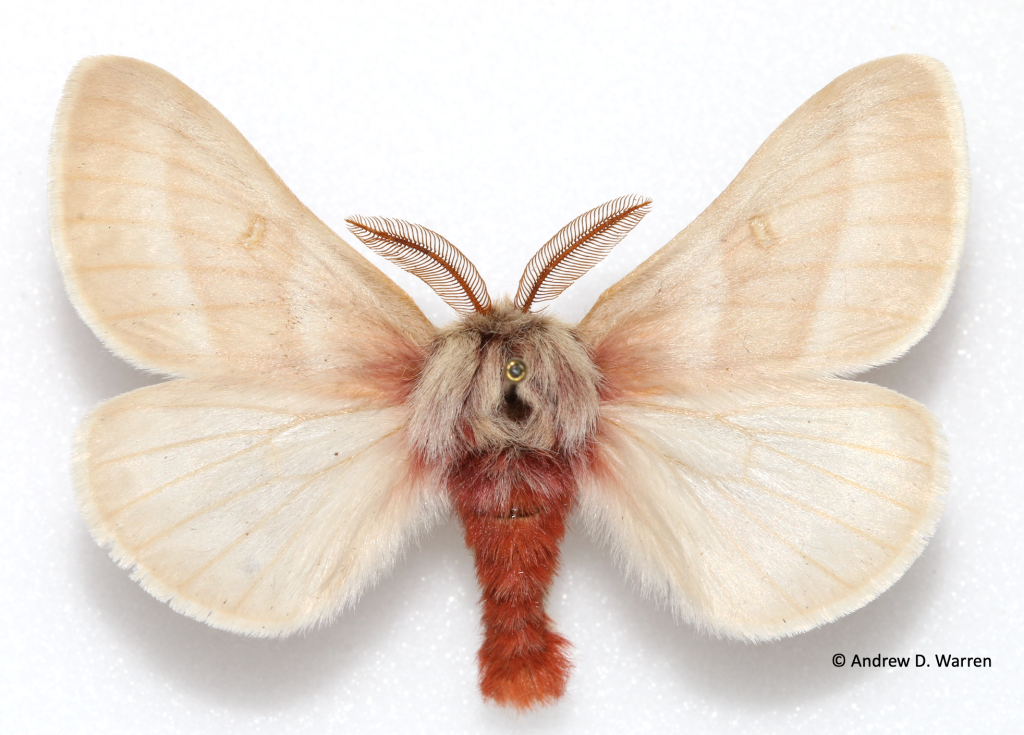

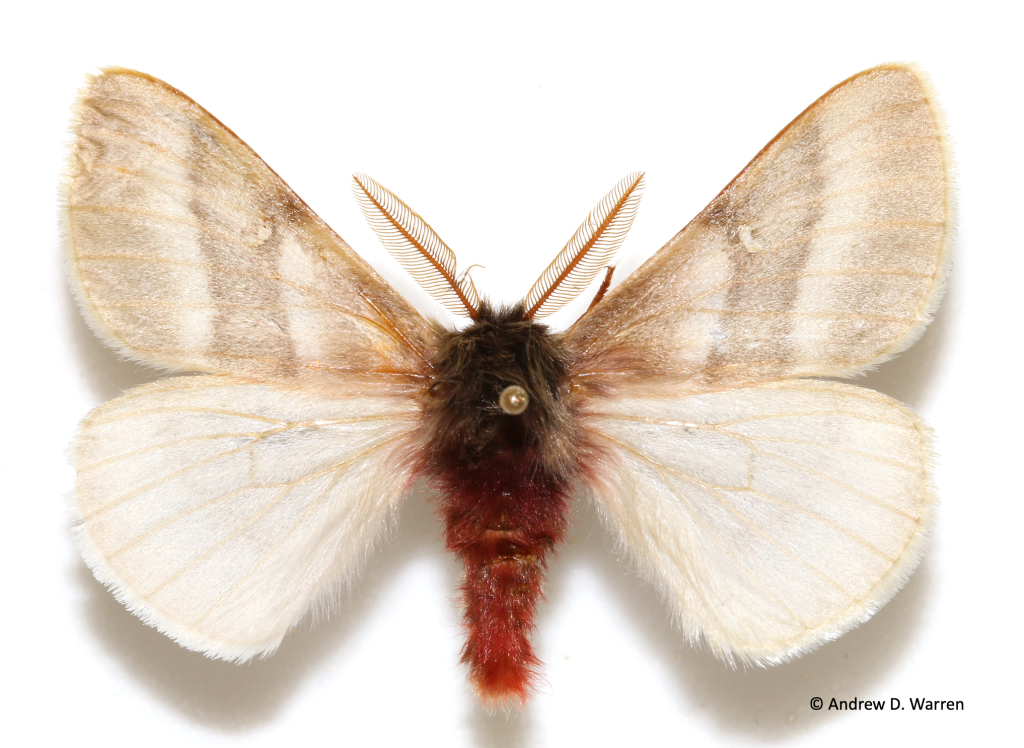
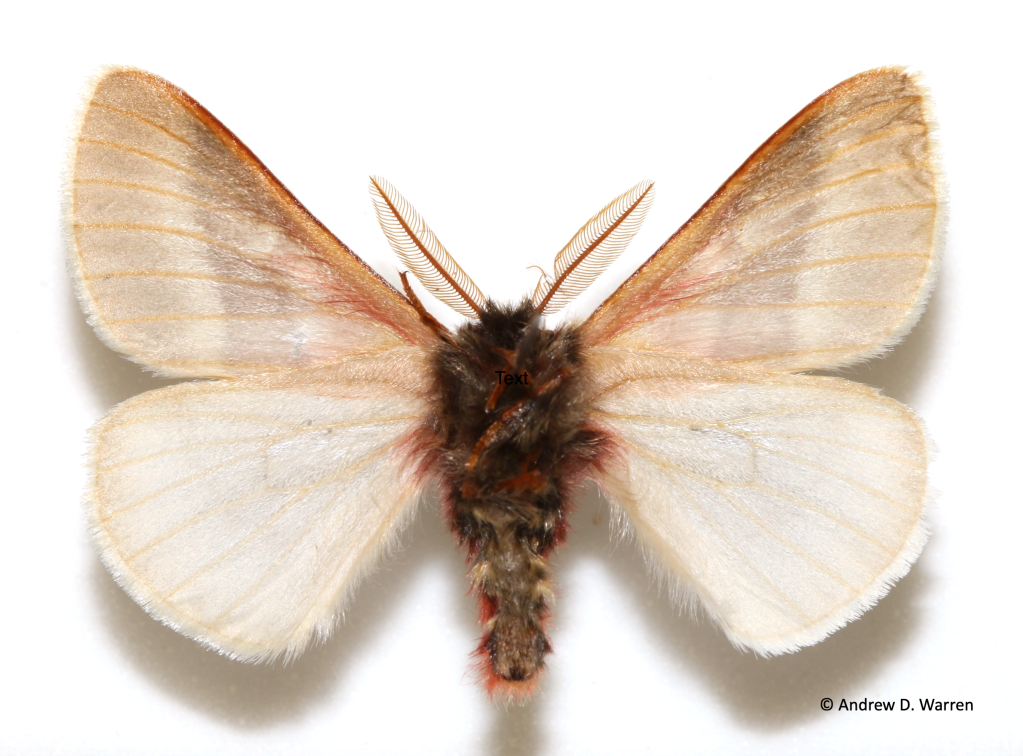
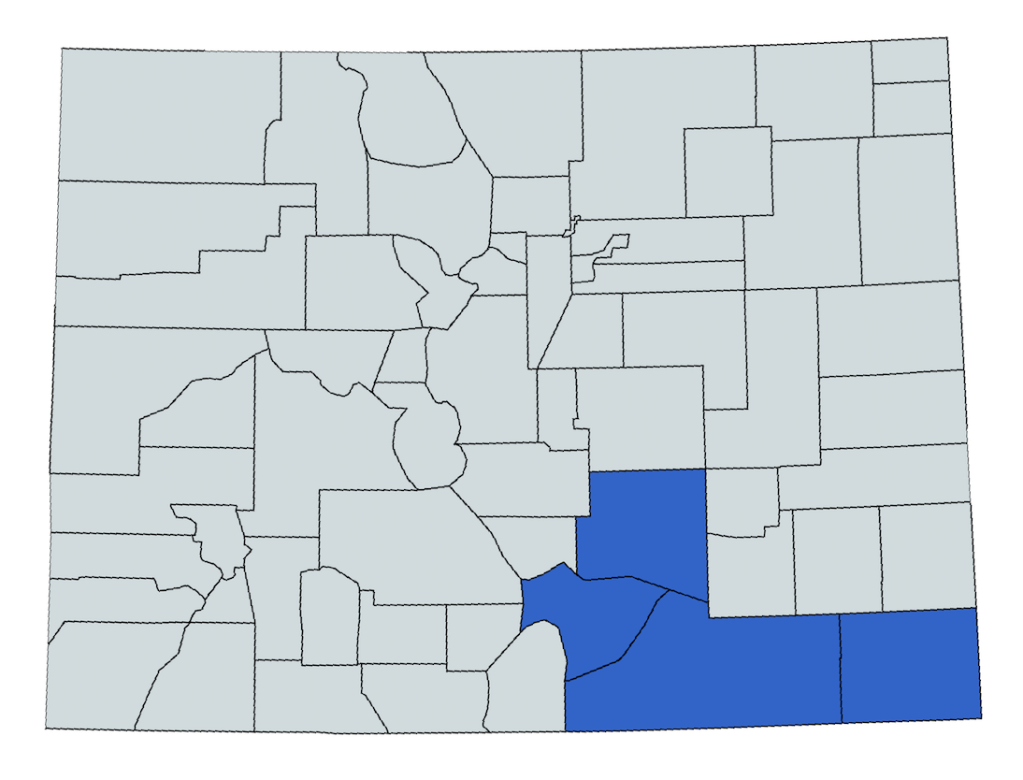
Hemileuca oliviae is found in the southeastern part of the state, in areas dominated by blue gramma (Bouteloua gracilis), the larval foodplant. Larvae are known as the Range Caterpillar. Adults fly from late September to mid-October. FW = 16 mm
Hemileuca neumoegeni (H. Edwards, 1881)
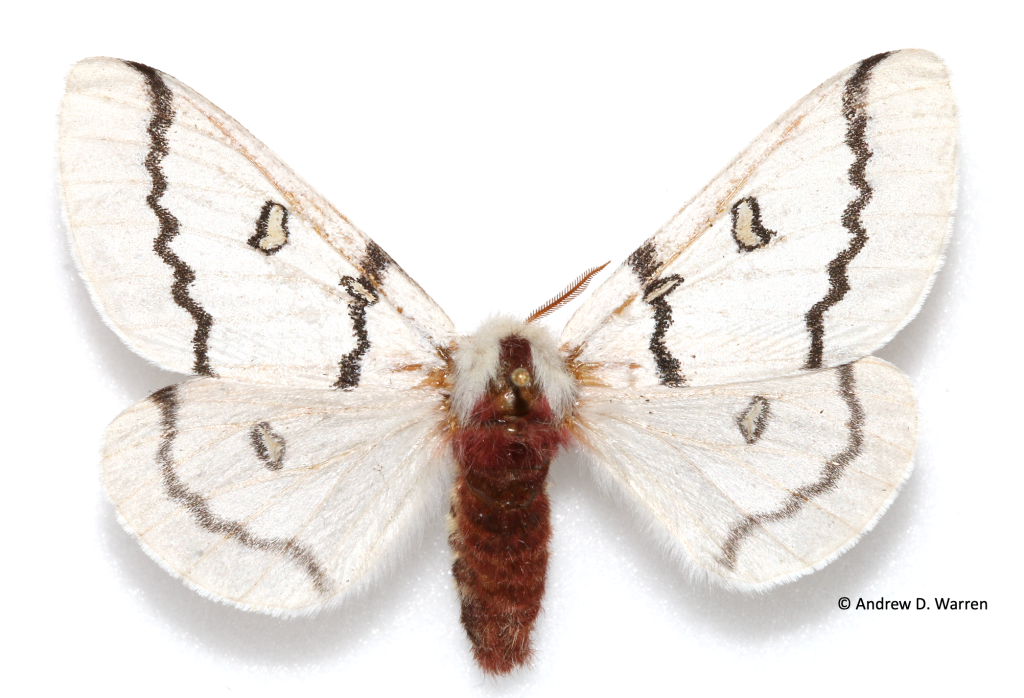
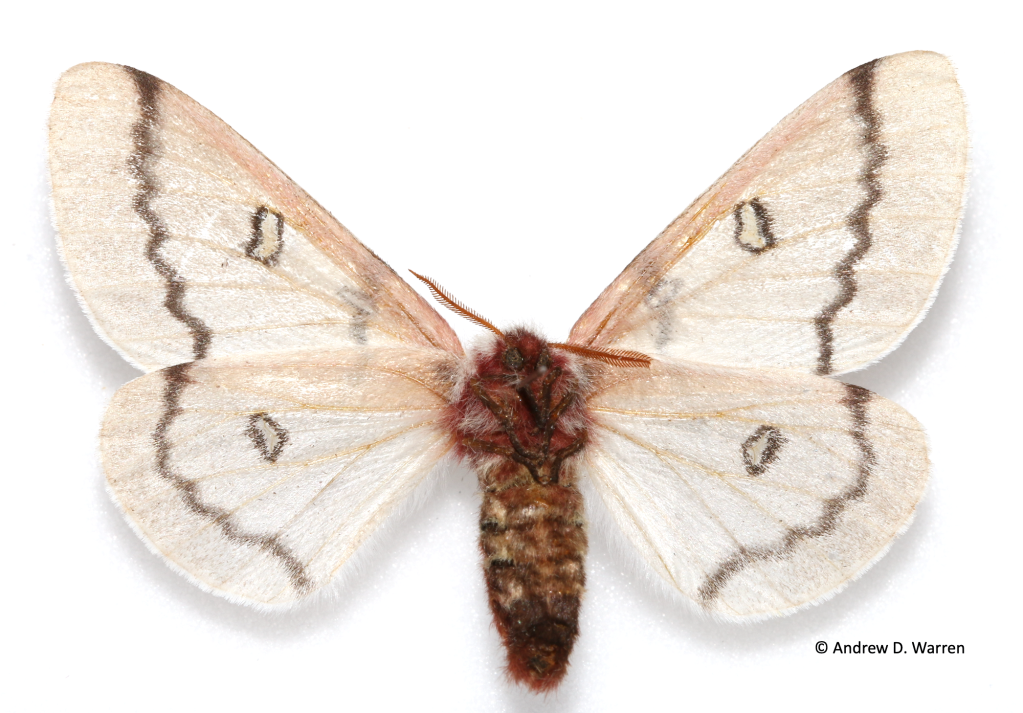



This lovely species barely enters Colorado at the far western edge of the state. Larval foodplants include desert almond (Prunus fasciculata), squawbrush (Rhus trilobata) and Apache plume (Fallujia paradoxa). Late Summer-fall flight, from late August to October.
Coloradia pandora pandora Blake, 1863





In California and Oregon, the Pandora Moth can be overwhelmingly abundant in late summer, although it seems less common in Colorado; however, adults are biennial. Larvae feed on pines, especially ponderosa pine. Adults fly late July to September FW = 28 mm
Coloradia luski Barnes & Benjamin, 1926

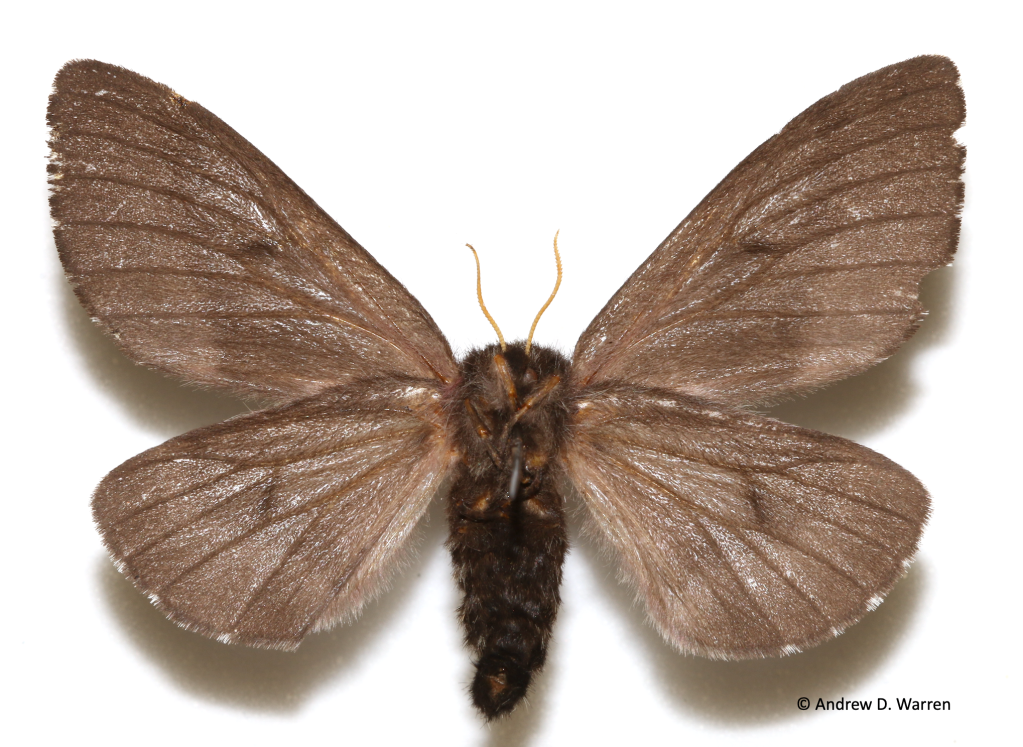

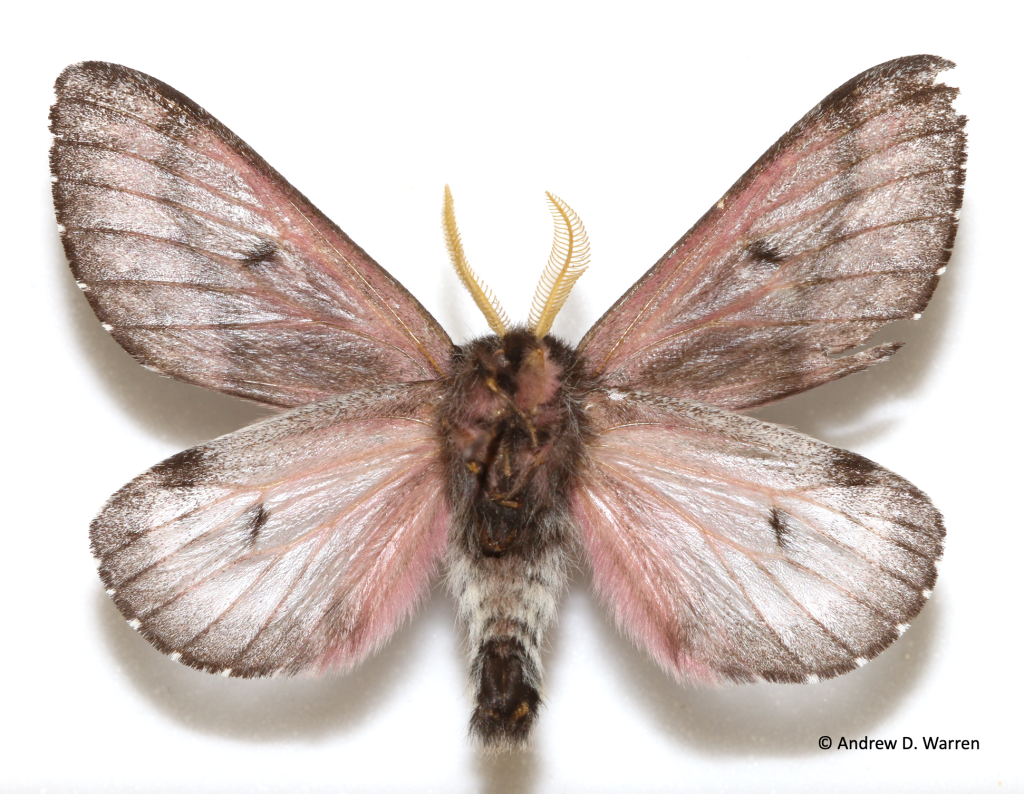

Coloradia luski is narrowly distributed in Colorado along the greater Front Range, usually between 8000-9000′. Adults fly in late June to late July. The larval foodplants are pines, especially ponderosa pine. FWF = 22 mm, FWM = 19 mm
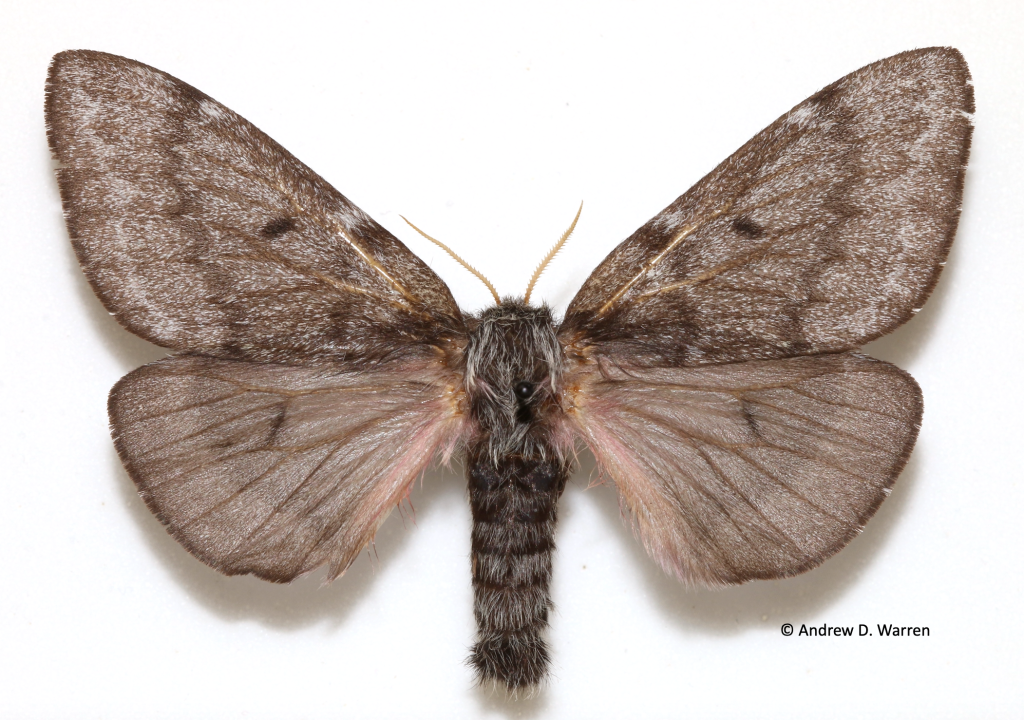


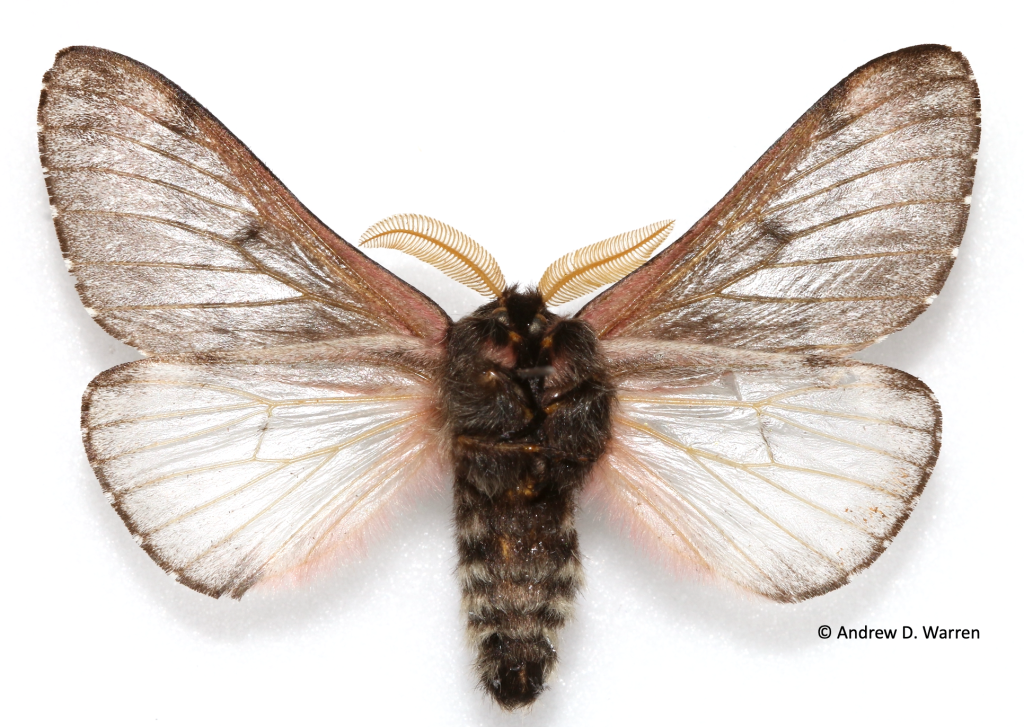
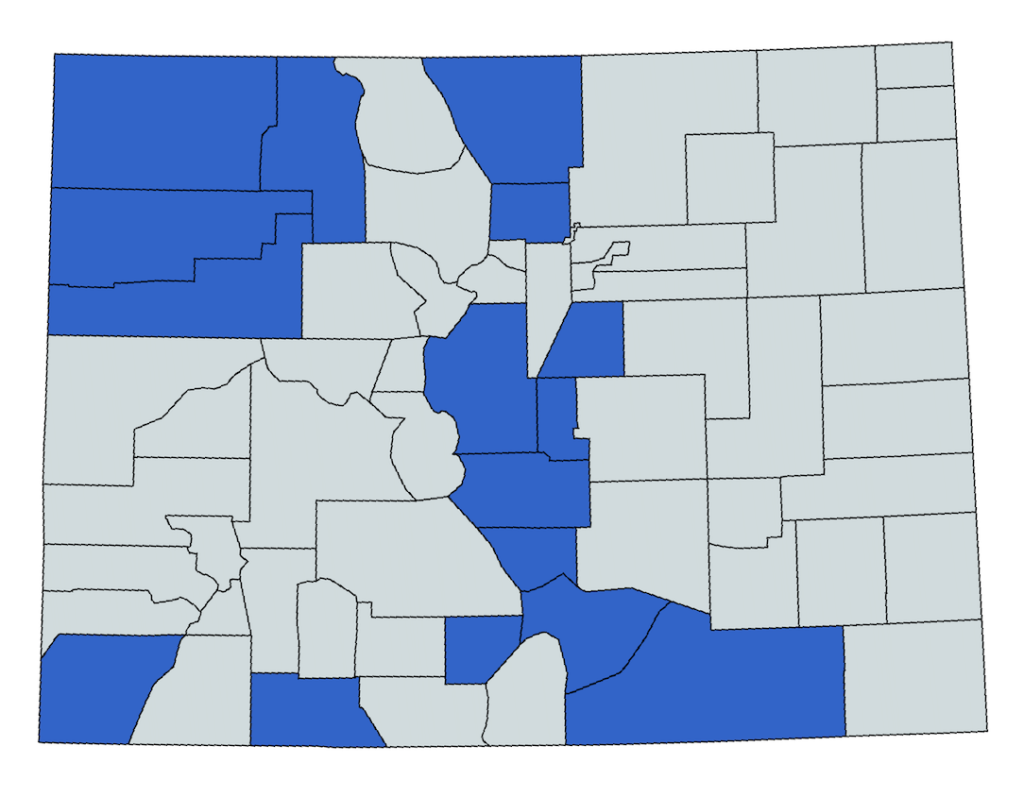
Coloradia doris is the earliest-flying of our Coloradia, mainly from late May to late June. Larvae feed on pines, especially ponderosa pine. While it overlaps in distribution with C. luski, doris tends to be at slightly lower elevations, and generally flies before luski, which begins to fly in late June. Detailed studies on how our various Coloradia relate to each other and how they partition their larval foodplant resources are needed to better understand our taxa. FWF = 22 mm
SATURNIIDAE: CERATOCAMPINAE:
Anisota oslari W. Rothschild, 1907





This southwestern species has only been found once in Colorado, at Mesa Verde National Park. Larvae feed on Quercus, including Q. turbinella, which grows in Montezuma County. Adults fly in July and August. Males are diurnal; females are nocturnal.
Syssphinx bicolor (Harris, 1841)



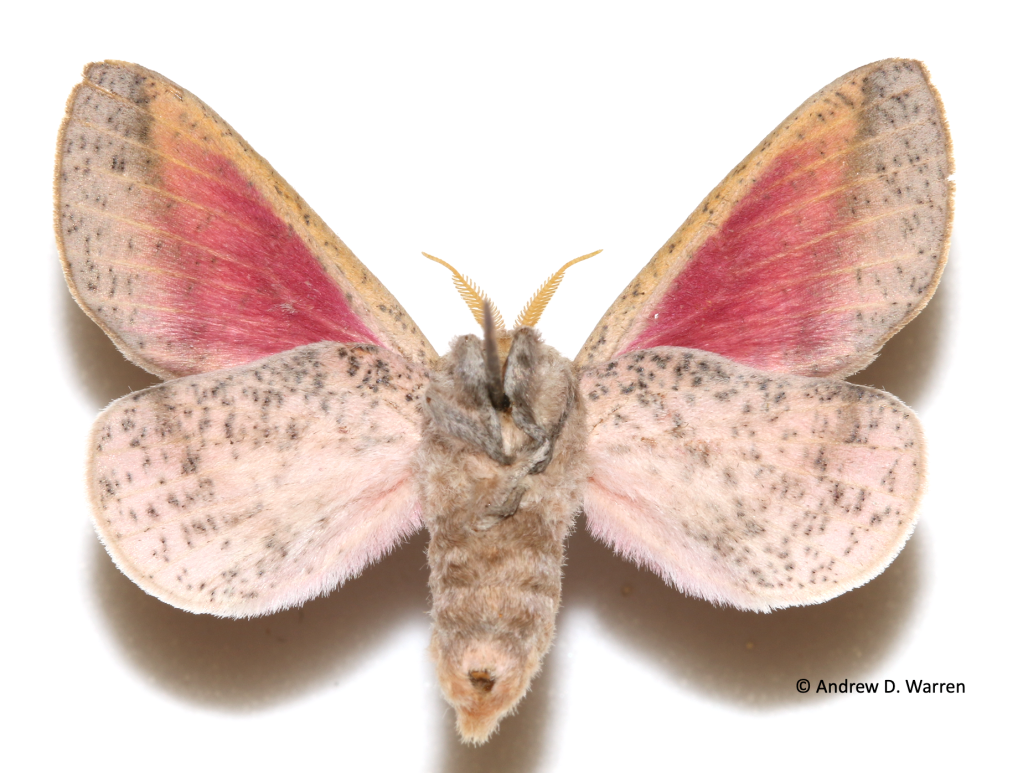

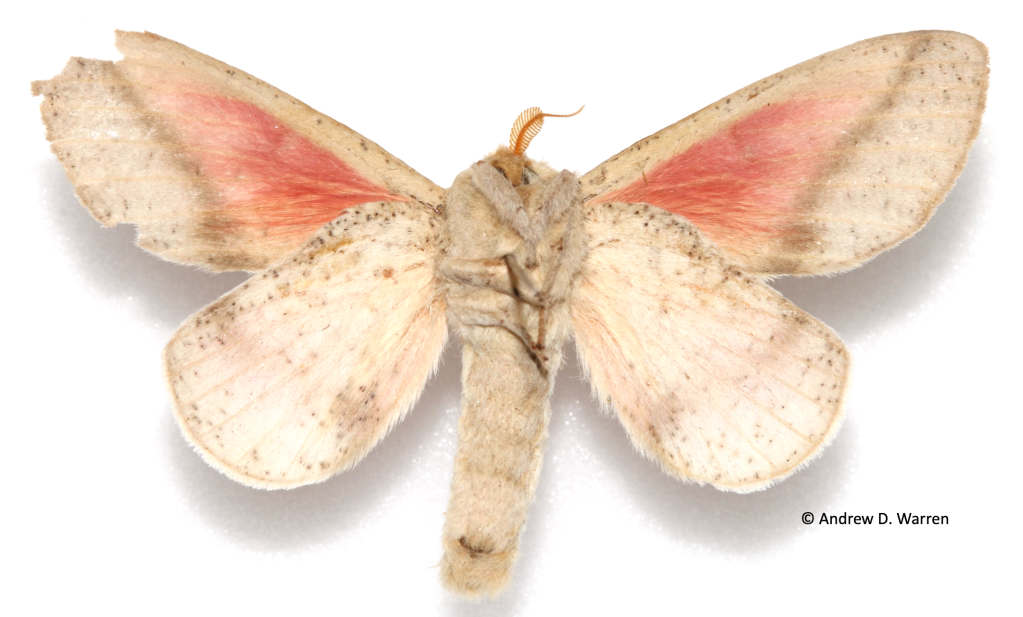

A series of specimens at CSU from Akron, Washington County, from June, July, and August, 1931, collected at light, are the only records of this species from Colorado; a male from this series is figured above. Larval foodplants include honey locust (Gleditsia triacanthos) and Kentucky coffee tree (Gymnocladus dioicus), which is widely planted in urban areas. The species is multivoltine, flying from late May to early August in the main part of its range. FW = 15 mm
SPHINGIDAE: SPHINGINAE:
Agrius cingulata (Fabricius, 1775)


